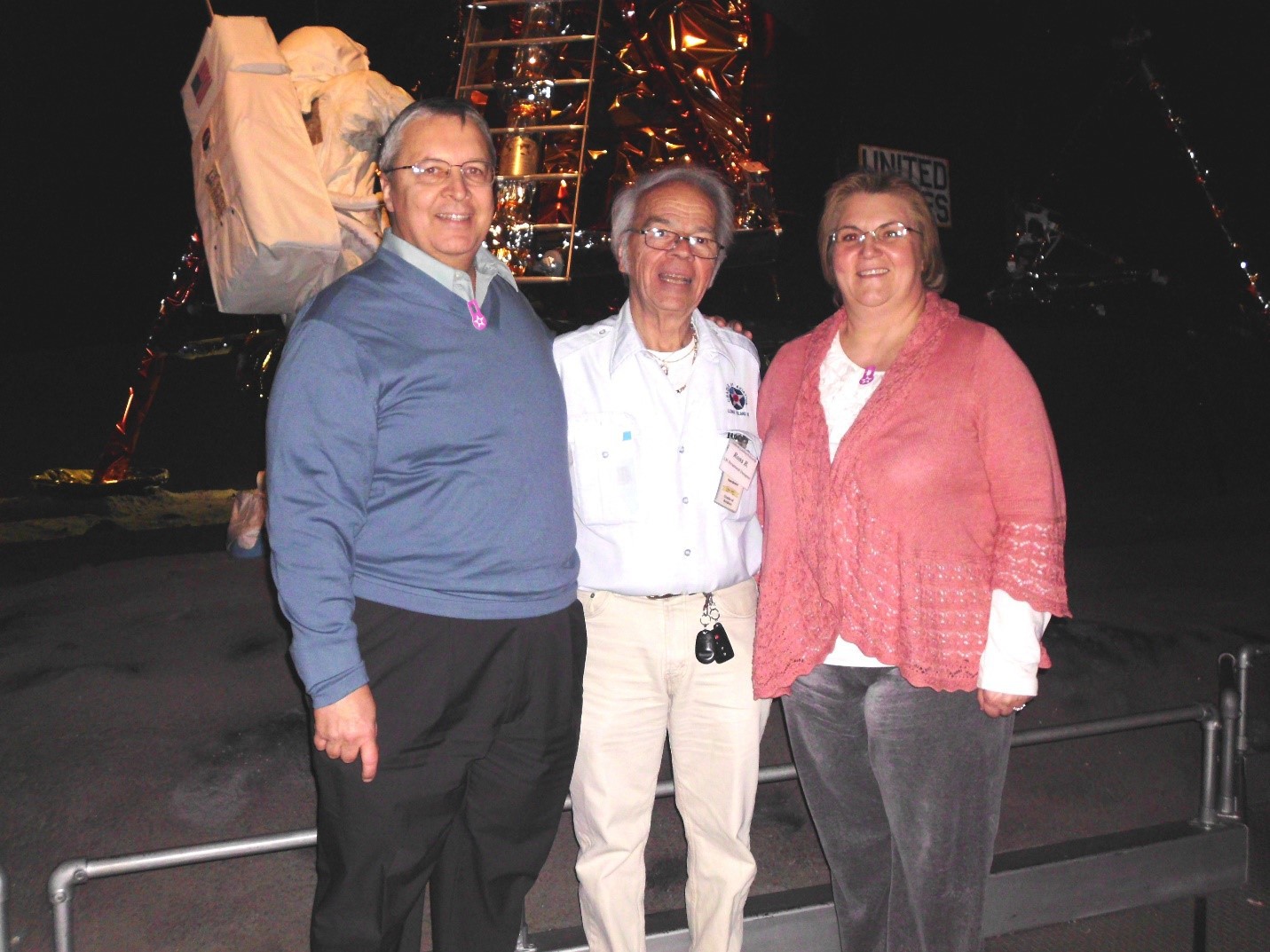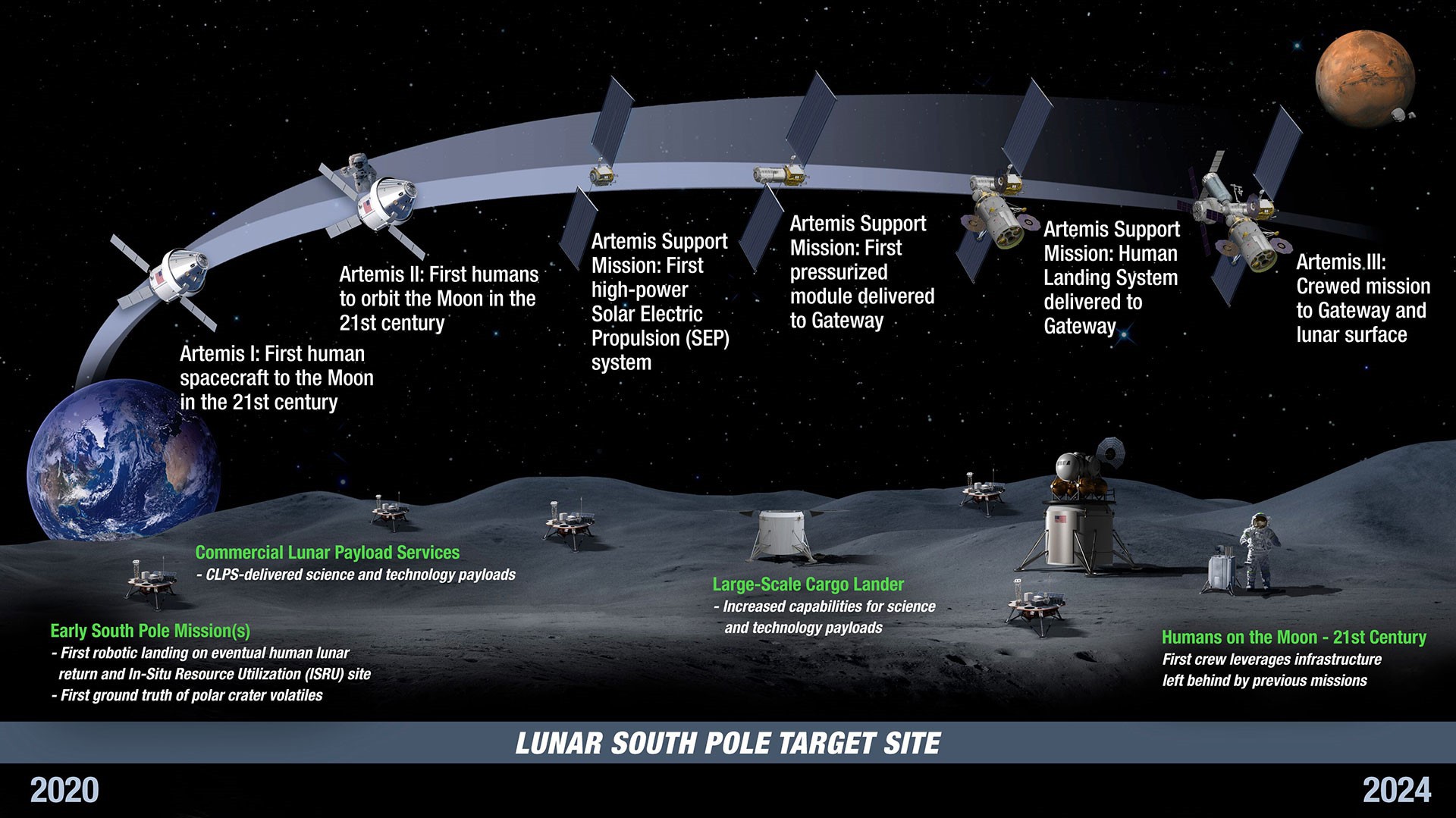
Left to right are Steve T (author), Ross Brocco (a 30+ year veteran Structural engineer for Grumman), and my wife and photographer Loretta. We are standing in front of an actual Grumman Lunar Module (LM) at the Cradle of Aviation Museum in NY circa 2012. This LM 13 was last in the series and never flew; its mission (Apollo 18) was cancelled to move on to the Space Shuttle program.
Ross Brocco is featured in my upcoming copyrighted book “Guardians of the Right Stuff”. He was at Grumman for 30+ years as a Structural Engineer on the Apollo Lunar Module program. Ross was responsible for the mechanical design of the front door hatch on the LEM and various other mechanical components.

The Lunar Module was a true engineering marvel. Even to present day, it is the only crewed transport vehicle designed to function solely in the vacuum of space. It was expertly designed by Grumman Corp. on Long Island, NY. The LM's main purpose was to land men on the moon and return them safely to the Command Module orbiting the Moon. The LM was never actually flight tested because the Lunar environment could not be replicated. During the span of the Apollo program in the 60s and early 70s, 13 Lunar Modules were built by Grumman Aerospace Corporation (now the Northrop Grumman Corporation). Only six of those made manned lunar landings.
Fast forward to the present day efforts by NASA in their “Moon to Mars” program known as “Artemis” named after the sister of Apollo. This program will take astronauts back to the Moon.
On April 30, 2020 NASA chose Elon Musk’s SpaceX , Jeff Bezos’ Blue Origin, and a third party led by Dynetics of Huntsville, Ala. for initial design development work over the next 10 months for the next Lunar Landing system.
I met with former astronaut Lee Morin, MD, PhD. Dr. Morin explained the difficulty of bringing materials and supplies to the Moon to establish a base there which eventually will enable a Moon-to-Mars manned excursion instead of a direct Earth-to-Mars trip. The Rocket equation stands in our way!

M = Instantaneous Mass of the rocket, V = velocity, ISP*g = exhaust velocity
There is an excellent treatment of the Rocket Equation on Medium.com with “Rocket Science 101: The tyranny of the rocket equation”
The Apollo program only delivered a crewed payload of 6,900 kg to the surface of the Moon (It is a fact that in six Apollo Moon landings we only delivered a mass of about one fully-loaded van!). How are we to send such things as an earth-mover like a hydraulic excavator at 35,100 kg, or something like a habitat to work like US Lab Destiny at 14, 000 kg? The answer: convert resources already on the Moon for our needs of a crewed base there using Lunar Regolith, sunlight in a Vacuum with a three second delay in communications to Earth.
The best way to do this is “telepresence” or Robotic remote control in early missions with a payload of 1,000 kg to the Lunar surface. Probably a robotic rover that can dig and remove regolith and process it in a lab that needs to be built with an In Situ Resource Utilization (ISRU) Material Processing Lab on the Moon.
The ISRU Lab will ultimately be a place to assemble, manipulate, and repair apparatus. There will be a Solar Furnace to bake and fuse regolith (Regolith is not soil. Soil has organic content, and the moon's regolith has none. Volcanic soil is fertile, because of the nutrients in it). In this way Moon glass and ceramic materials can be made which will be 50x stronger than Earth glass.
Thin Film Deposition in the Lunar vacuum can create mirrored coatings on Moon glass-----this leads to solar cell manufacturing!
Extracting of metals like FeO and then using electrolysis in regolith melt can yield Oxygen.

NASA's Phase 1 Gateway will include a Power and Propulsion Element, Habitation and Logistics Outpost and logistic supply that is a Lunar outpost orbiting the Moon (Image courtesy of NASA)
The Lunar South Pole is the targeted site for a crewed landing there in around 2024.

(Image courtesy of NASA)
Can Helium 3 harvesting finally be far behind? See my interview with astronaut Harrison Schmitt here. He was the second last man to leave the Moon’s surface on the last Apollo trip on Apollo 17.

Astronaut Harrison Schmitt (Left) and author Steve Taranovich (right) (Image from Loretta Taranovich) at the Long Island Cradle of Aviation
NASA says that if our 1000 kg “seed” mission can replicate ~120 grams an hour, it doubles every year… The seed becomes a million kilograms of lunar industrial capability after ten years… (NASA)
 Steve Taranovich
Steve Taranovich
Discussions
Become a Hackaday.io Member
Create an account to leave a comment. Already have an account? Log In.